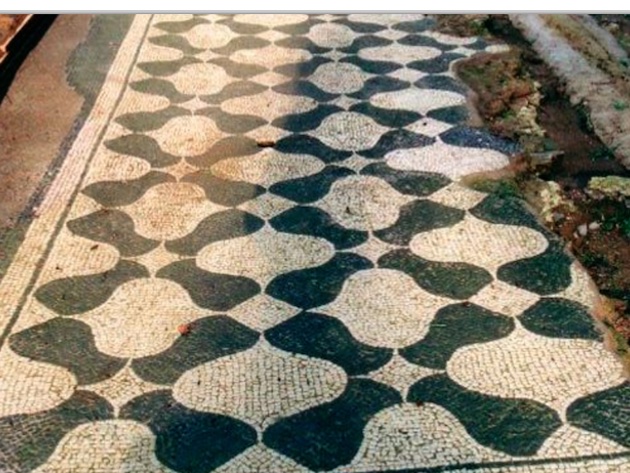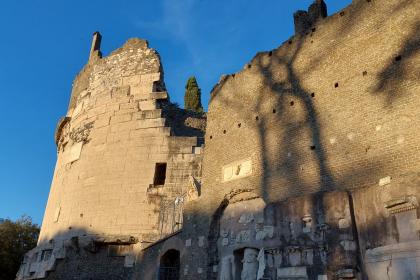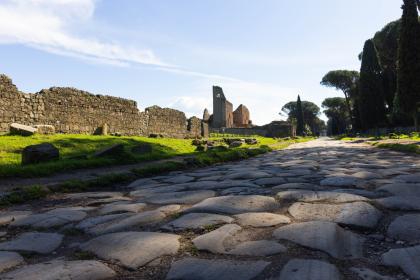
Le complexe Capo di Bove est situé au quatrième kilomètre de la Via Appia Antica, non loin du mausolée de Cecilia Metella. L'origine du nom remonte au Moyen Âge, lorsque la zone faisait partie du domaine de Capo di Bove, un toponyme dérivé des décorations de fleurs et de fruits qui ornaient la frise du sépulcre de Cecilia Metella.
La zone, achetée en 2002 par la Surintendance archéologique de Rome et le ministère des Biens et Activités culturels (devenu aujourd'hui le ministère de la Culture), a fait l'objet de fouilles archéologiques qui ont mis au jour une installation thermale datant du milieu du IIe siècle après J.-C. avec des phases de construction allant jusqu'au IVe siècle et des traces d'utilisation agricole remontant à la période antique tardive, lorsque la zone faisait partie du Patrimonium Appiae, un vaste domaine agricole appartenant à l'Église.
Il ne reste des thermes que des salles, des sols en mosaïque et en marbre polychrome, des réservoirs d'eau, le système d'égouts et des parties du revêtement de dalles de marbre et d'enduits peints. Des études ont suggéré que le terrain sur lequel se trouvaient les thermes appartenait probablement à Hérode Atticus et à son épouse Annia Regilla.
Aujourd'hui, la zone comprend un bâtiment principal, construit pour abriter des événements culturels, des réunions pédagogiques et pour accueillir les archives et la bibliothèque d'Antonio Cederna, le père du mouvement environnemental en Italie, et un bâtiment secondaire destiné à l'accueil des visiteurs.
Mausoleée de Cecilia Metella

 Condividi
Condividi
La Rue Appienne

 Condividi
Condividi
Informations
Open on Tuesdays, Thursdays and Sundays with last entry 30 minutes before closing time.
Closed on 25th December and 1st January.
From 1st October to 31st October from 9 to 18.30
From 1st November to 28th/29th February from 9 to 16.30
From 1st March to 31st March from 9 to 18.30
From 1 April to 30 September from 9 to 19.15
For updates anduidelines, please visit the official website.
 Condividi
Condividi
Location
Pour connaître tous les services d'accessibilité, visitez la section Rome accessible.











































